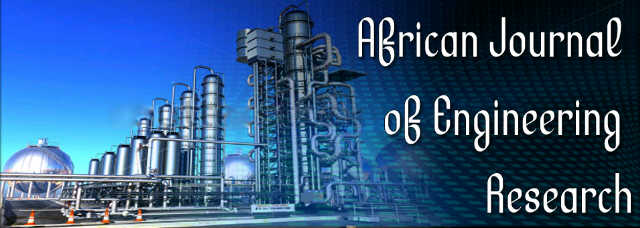Diatomic heat insulating material combined by ceramic bond
S. B. Hanna, S. S. Ibrahim, M. M. S. Wahsh and T. S. MansourAfrican Journal of Engineering Research
Published: April 9 2014
Volume 2, Issue 2
Pages 26-38
Abstract
Based on the existing demands of some types of heat insulating materials in Egyptian industries, this work is directed to employ the Egyptian diatomite in their preparation. Therefore, five diatomite samples were employed for this purpose cooked rice hulls and saw-dust were added to each sample as pore former agent in amount of 5 to 20 mass % and 2.5 to 15 mass % respectively. After mixing with water and shaping, the dried specimens are fired at temperature up to 1100°C. The changes in their physical properties, microstructure and mineral composition under different preparation conditions are studied. When both pore former agents are added to the specimens, their bulk density was reduced. The strong effect appears on the bulk density of saw-dust containing specimens. Diatomite specimens of 0.68 to 0.83 g.cm-3 bulk density, 69 to 74 open porosity, 0.5 to 1.4 MPa compressive strength and 1100°C application temperature are obtained. Their chemical composition affected their thermal stability. When the value of Al/ (Al + Si) is low compared with the values of Ca/Si and Ca/ (Al + Si) atom ratio, low amount of glassy phase was formed in the specimens fired at 1100°C, and hence they are thermally stable at this temperature. Their pores are divided into minute and macro pores. The minute pores, in the specimens fired at 1100°C, are preserved with decreasing impurities content. The shape and size of macro pores (<50 μm) are effected with type and amount of pore former agent.
Keywords: Diatomite, cooked rice hulls, saw-dust, porous materials.
Full Text PDF
